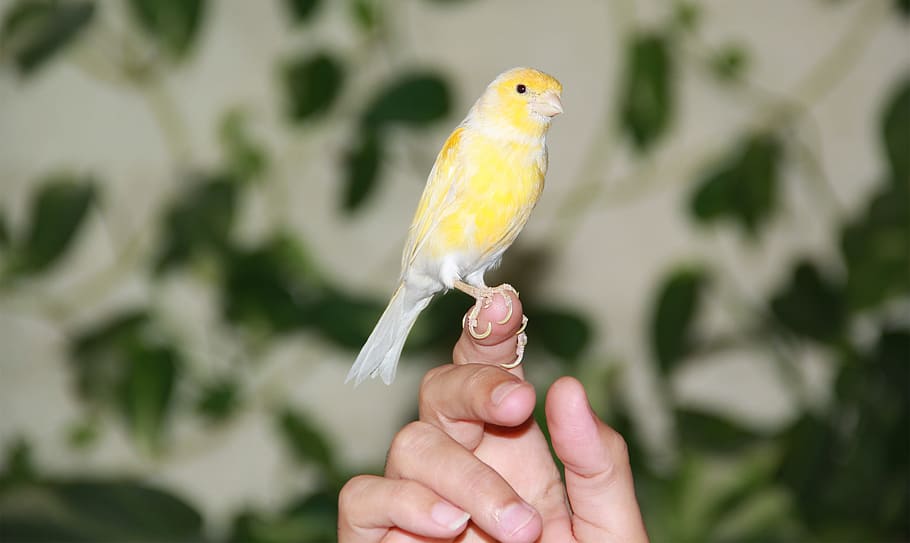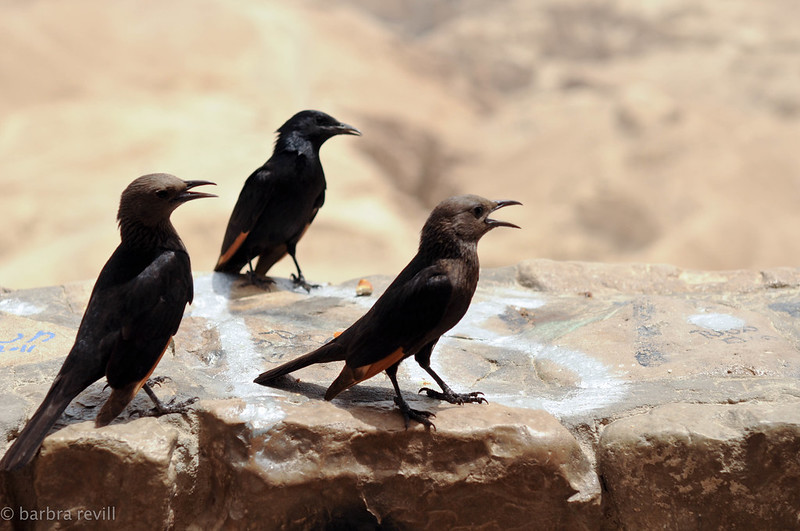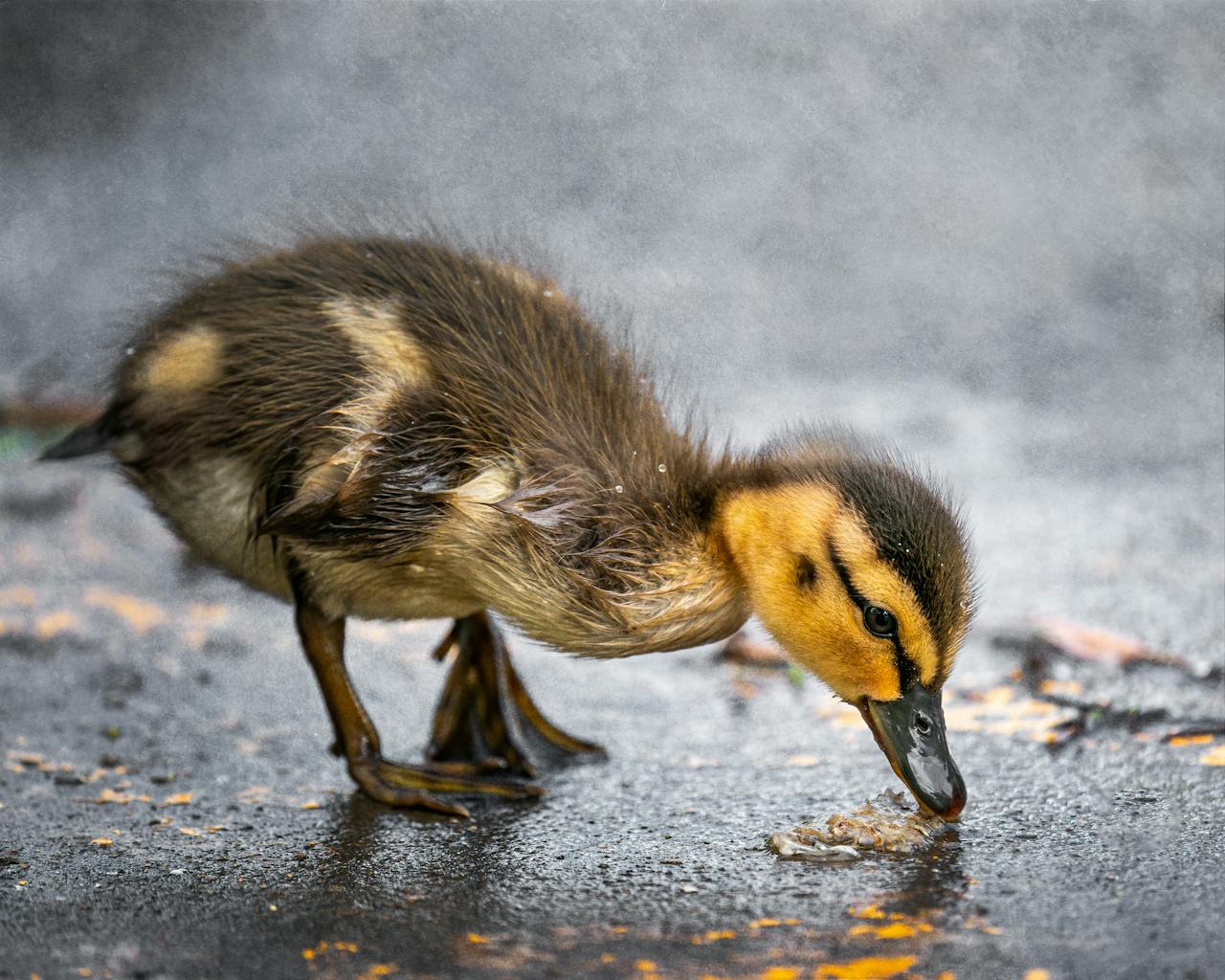Most bird owners keep canaries as caged songbirds. After all, canaries are known for their singing. Still, the good news is that you can tame your canary by hand and have them interact with you effectively.
A hand tamed canary can become your best companion over time. Canaries have been domesticated for centuries. You can care for your canary just as early bird owners did before the pet shop became a thing. Learn how to tame a canary by hand, and enjoy a beloved addition to your household today!
Get Your Canary Used to You
Canaries are one of the most nervous species of birds on the planet. These birds are very attentive to the slightest threat and can take off as soon as they sense danger.
Their nervousness is a natural response to marauding predators. So, you should know that you are a stranger to your canary if you have just received your bird recently.
You need to give your canary time to get used to you before you even think about how you can tame your canary by hand. You can do simple things like hiss or sing to your canary to get used to you.
In addition to getting your bird used to you, it would be best to get them used to their surroundings. Canaries are prone to nervousness. So, it would be best if you were patient and allowed your bird to familiarize themselves with the area around their cage.
Please refrain from making loud noises and sudden movements when approaching the bird cage, for fear of scaring your bird.
Spend time with your canary for the first two days before embarking on taming your bird. The more time you spend with your canary, the more your bird will get used to you as an owner.
Start at an Early Age
It is easier to tame a baby canary by hand than to tame an adult canary by hand. Therefore, start taming your canary at an early age.
Your bird will respond positively to your taming sessions during its formative years. If you have a baby canary, immediately start taming it by hand rather than waiting for the bird to mature.
Call Your Canary
Now your canary is comfortable with you and ready to be tamed by hand. Now is the time to call your bird out of the cage at your hand. The best way to get your bird out of its cage is to use treats to entice it out of its cage.
Continue to hold the treat after your bird is out of its cage. Create a perch between your fingers and encourage the bird to perch on your fingers. Reward your bird with a treat once it lands on your fingers.
Over time, you can practice calling your bird from its cage without using a treat. Your bird will learn to perch on your fingers with enough practice. Continue to encourage him to perch on any part of your body, including your head and shoulders.
Try to hold your canary and speak quietly to him once he is comfortable perching on your hand. At this point, you have become friends with your bird and he is ready to accept your efforts at manual taming. Remember that canaries can be docile bird species despite their nervousness. Eventually, your bird will learn to get out of the cage every time you call for it.
However, it would be helpful to seal your house so that the canary does not fly out of its cage. Make sure there are no pets such as dogs or cats around before removing your canary from its cage. The presence of a cat or dog can frighten your bird, causing it to fly away from your home.
Feed Your Bird by Hand
Hand feeding a canary is an essential step in taming a canary by hand. Nonetheless, taming a canary by hand is a lengthy process that requires a lot of time and patience. The result of hand feeding is that a happy canary bird was once around you and its surroundings.
To begin the process of manually feeding your canary, choose the right foods that will motivate your bird to feed from your hand. Consider feeding your canaries seeds, as seeds are one of the favorite foods for canaries. You can also combine seeds with vegetables and fruits.
Since wild seeds cannot be obtained for your canary, consider purchasing seed mixes at pet stores. Alternatively, you can consider purchasing millet for your bird. Canaries love millet, and they won’t hesitate to eat millet from your hand.
Whatever food you place on your hand, make sure it is your bird’s favorite food. Additionally, put a small amount of food on your hand and encourage your bird to come out of the cage and feed from your hand. Train your bird to have your hand as the only feeding point.
This way, your bird will have no choice but to feed on your hand, especially if it is hungry. However, make sure your canary is comfortable feeding on your hand.
Be Patient
Hand-taming a canary is not a straightforward process, especially if you are trying to hand tame a wild canary that was free most of the time. You will need to be patient throughout the process; otherwise your efforts will not be successful.
Manual taming of a canary can take months. For example, your new canary won’t be comfortable getting out of the cage and perching on your hand. Again, you need to be patient before your bird gets used to you, especially if you’ve just brought him home.
Never force a canary out of the cage and land on your hand, if it is uncomfortable perching on your hand. Being energetic can end up causing pain for your bird.
Additionally, it can make your bird nervous and unlikely to respond positively to your manual taming efforts. Therefore, understand that canaries are not humans and therefore cannot be tamed by hand overnight.
How Do You Get Your Canary to Trust You?
I’ve found the easiest way to get your canary to trust you is to have a cage that is inviting. You can have plush toys that are mimic bird behavior, or even just something that the bird can get comfortable on. Another bird toy that will be great to entice your canary, is a mirror. This way, they won’t feel so alone in the cage without another of their own kind.
Place your finger gently on the cage, just above or below your canary, and simply wait. Your canary will soon fly over to that spot. When you have gained the trust of your bird, then you can proceed to take him out.
Do Canaries Like to Be Held?
It depends on the canary. Some do while others do not like to be held. canaries like to be held, however they prefer to be in your arms while you are standing up. Birds should not be held for more than 15-20 minutes at a time because holding canaries for this length of time could cause them harm.
Holding a canary might seem like an odd way to spend time with your feathered friend. But, as it turns out, it is quite enjoyable for everyone involved! For starters, it’s important to understand that, unlike dogs and cats who need to be taught how to enjoy affection and company, canaries were born loving human contact. Just like we want our feathered friends to feel happy and safe in our hands, they enjoy the warmth and security created by close contact with their owners.
Can Canaries Be Handled?
Yes. Canaries are quite docile and can be handled, but they are also very delicate. Some breeders remove the pinion feathers from the wings of their birds to make them less prone to injury during handling. It’s natural to want to pet your canary (after all, they look like tiny parrots). However, the best way to interact with your bird is through handling.





Leave a Reply